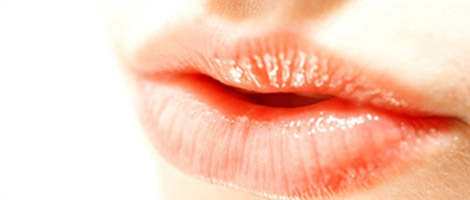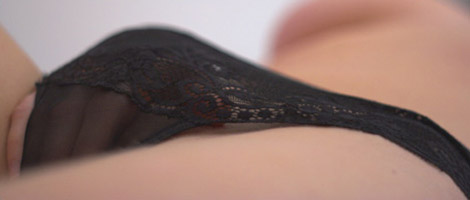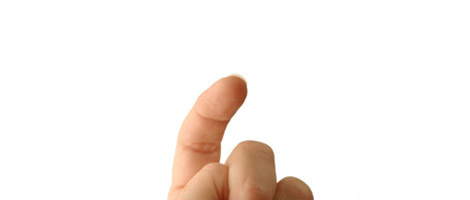
Female Orgasms
Some women seem to have an incredibly difficult time reaching orgasm during intercourse; that is if they are able to orgasm at all. The most common reason for this is that they don’t know their own bodies. Society has had this brilliant effect of instilling into our minds from childhood that masturbation is sinful, wrong and dirty. Well, everyone is entitled to his or her own opinion, but all common sense dictates that this couldn’t be farther from the truth.
Thanks to this misconception, many people, especially women, have stopped themselves from learning their bodies, thereby reducing the chances of being able to fully enjoy sex. It is hard for many women to unlearn all that they have been taught, and they often feel that “touching themselves does not bring pleasure”. There is some truth behind that - they are not lying, they do not feel pleasure. However, this is not because there is no pleasure to be felt, just that they have been indirectly taught to not enjoy it. Getting beyond this will take time and patience, so never rush your partner.
If your woman has never had an orgasm (this is often the case if they say, "I think I’ve had one"), you will want to refer to the Female Masturbation Guide to get things started. Learning to please a woman who can’t orgasm on her own is extremely difficult, so we highly suggest that you start with getting her to play with herself, and allow her to learn how her body reacts to different stimulus.
The last note has to do with your approach. Orgasms can’t be forced, and the more pressure you put on her to cum, the less likely it is to happen. Take things slow, learn techniques, experiment with them and find what works. If you start getting frustrated when you aren’t seeing results, it will show, and unfortunately make it even harder. Sex is supposed to be fun and enjoyable - as soon as you make it too serious, it takes away from the pleasure!
About Orgasms
There are two major types of orgasms a women can have - clitoral and G-spot (otherwise known as vaginal orgasms). When masturbating, women usually learn to get themselves off using their clitoris. There is nothing wrong with that, but it leaves the whole world of vaginal orgasms untapped. Many women are unable to climax during intercourse, as they aren't familiar enough with the stimulation to enjoy it to its fullest extent. While you learn to read your partner's body signs, it never hurts to ask a question, especially if you are trying new techniques.
Coitus, commonly known as vaginal sex, or PIV (penis in vagina), can be one of the clumsiest ways to stimulate a woman, if done without thought. While it does provide an atmosphere that can be highly arousing, emotionally satisfying and erotic, the degree of stimulation to the woman's clitoral area is nothing compared to masturbation or cunnilingus. One can incorporate manual stimulation to the clitoris during sex, but this is not very necessary if your woman has had vaginal orgasms in the past, and if you know how to hit the g spot correctly. No one wants to involve geometry into sex, but it is wise to know which positions stimulate the G spot the best. In order to help her achieve a vaginal orgasm, you need to make sure you are "hitting" the G-spot with each stroke.
Female Ejaculation
Let's begin by understanding what the elements of the ejaculate are. The four main ingredients are Glucose, prostatic acid phosphatase (an enzyme which is characteristic of the prostatic component of semen), urea and creatinine. The last two ingredients are commonly found in urine, but are in lower levels than in urine. So there is some urine in the ejaculate. Some studies conclude that in some women the ejaculate is more like urine, and in other women it more like a prostate fluid. Until this question is answered fully, its safest to assume that it is a bit of both. The quantity of ejaculate can range from a few drops, to a shower of it.
Where does the ejaculate come from? There are several theories on this, but remaining constant amongst all of them is that female ejaculation tends to comes from G-spot Stimulation. When the G-spot is stimulated over a period of time, the spongy tissue that creates this area fills with fluid. Women who can ejaculate often hold back, thinking that it is urine. The exact source of the ejaculate is still debated by researchers, but it does appear to come out of the urethra (like urine) and/or nearby Skene's Gland, so that is where the confusion takes place.
So what's left? You might want to learn how to get someone to ejaculate, or how to do it yourself. Like exploring everything else new in your experience of sex, you should work towards it, but not put unnecessary stresses on yourself by making it your goal. Also, it is not known whether all women are able to ejaculate, so if you or your partner is unable to - don't worry, but perhaps keep trying once in a while. As you already know, the ejaculate comes from the urethra or Skene's Gland, so it feels a lot like urine.
Apart from those who love 'golden showers' (the fetish of urinating on, or being urinated on), many people do not feel comfortable enough to risk urinating on or around their partner. It may be a good idea to allow yourself or your partner some privacy to understand this function of their body; at the very least let your partner now that you are excited about it, not grossed out. That being said, great places to try this out include the shower or bathtub, in or near water, or on top of some old blankets that you don't mind getting wet.
Some Ideas on Getting Her There:
First of, we would like to remind you to relax, and not to make her orgasm the purpose behind the encounter. The more of a goal you make it; the less likely it is that it will happen. Relax and enjoy yourselves, as that is the most important part.
The Grind
During Intercourse, you want to increase the pressure exerted on the woman's clitoris. This can be accomplished by rotating your hips just like when you are "grinding" on a dance floor. Try to really push against the front of her groin with the area just above the penis. Rocking back and forth or side to side is a really good way of getting started.
Rule of Thumb
With the woman sitting on top, the man should lie flat on his back, pelvic tilted upward, and stomach muscles tightened. You want to arch your hips upwards to improve the quality of “the Grind”; this can be achieved easily by putting a pillow under the man’s bum. He then should put his hand over the woman’s pubic region, and place his thumb on the woman’s clitoris. While the woman is riding her partner, he can simultaneously stimulate her clitoris.
T Position
With the woman lying on her back, the man should lie perpendicularly (i.e., at a right angle to her, thus forming the ‘T’), while straddling the woman’s far leg. Depending on the woman’s flexibility, this can be a great position for deep penetration, while exposing the clitoris for manual stimulation. This double stimulation is very gratifying and can often lead to the big “O” really quickly.
The Maximizer
The woman lies on her back, legs tightly held together. The man lies on top, or stands/kneels, in front. Instead of being directly in line with her, the man should be at a slight diagonal. Both of her legs should be over one shoulder, or on one side, of his body; he should begin penetration. This position is designed to maximize female clitoral stimulation and is easiest to perform with the man standing or kneeling (i.e. the woman should have her legs hanging off a counter, couch or bed).
Difficulty with G-Spot Orgasms
The G-spot is an area of erotic fulfillment that has been masked in ambiguity. It wasn't until the 1950's that Ernst Grafenberg published his findings on the existence of this precious nub in an international journal of sex. During the days before the sexual revolution, this discovery generated little interest. Even if his discovery had reached the forefront of attention, the general public considered the subject immodest and unappetizing.
It wasn't until the 1960's that people began to rethink their beliefs about sexuality, tossing aside their preconceived notions and redefining codes of sexual behavior. The sexual liberation era primed the public for the next big revelation in women's pleasure, which came out in a groundbreaking publication in the early 1980's called “The G Spot and Other Recent Discoveries about Human Sexuality”.
The book put forward the following suggestion; not only do women's sex buttons swell to erection when aroused, they can also gush a female version of seminal fluid - not unlike a man's ejaculatory reaction to stimulation. What some women had already stumbled upon in their personal erotic exploration, had finally been recognized and given a context. As more attention was paid to the functioning of female ecstasy, it was established that the sexual differences between men and women weren't so great after all.
However, even with the emergence of well-founded information documenting every corner of feminine sexual gratification, the G-spot still remains misunderstood by both men and women. Despite the sexual liberalisation of western culture, and mass media communicating what appears to be nothing but sex, a sexual dearth continues to exist in the bedroom, where in spite of everything, many women just aren't able to ascend to their ecstatic G-spot peak.
In simple terms, they just can't come. The unfortunate part is it isn't for lack of trying; even a woman's most earnest desire to embrace her orgasmic potential won't always tip the scales to her favor. This piece will explore some of the reasons why it is so difficult for women to have a G-spot orgasm. We'll also discuss a few ways to make her physically and mentally 'G-spot ready'.
Why is it so Difficult for Women to Come?
Women's attempts at G-spot Stimulation can be very easily thwarted. Make no mistake; that which many consider to be their female birthright is evasive and can easily be sabotaged, whether it is self induced or contributed to by a less than competent lover.
At the top of the list is a woman's fear that she'll accidentally pee on her partner. This is an understandable misconception, since the sensation leading up to having a G-spot orgasm feels very similar to that that of needing to urinate. Another one that is high on the list is the fear that her sexual partner will interpret her ejaculate as urine, and as a result will 'judge' her or become repulsed by her. Female ejaculate does indeed contain some proportion of urine, but its overall make-up is something entirely different from urine. See Female Ejaculation for a more thorough analysis.
Some women feel pressure to ejaculate, so as to demonstrate to her partner that she's enjoying the sexual experience. This causes frustration and restriction, the very things that can prevent it from actually happening. It may be so exasperating that she simply resigns herself to the fact that a G-spot orgasm will never be a part of her sexual identity. For others, this stress can manifest as a denial of the actual existence of the female G-spot, which is critically important to accept in order to successfully transcend any psychological and emotional blocks preventing her from getting there.
Another factor that obstructs a female's satisfaction has to do with her sensual self-image. Embarrassment surrounding the way her body looks, insecurity over her erotic potential, and culturally induced shame of her sexuality are just a few of the chokeholds. These destructive beliefs isolate a woman, preventing her from opening communicating about her body's natural functions with fellow women.
A damaged self concept also precludes her from feeling free to explore her sexual organs. This is a definitive setback, since masturbation and physical self discovery are fundamental components of her erotic personality. It is a way to 'self-cultivate', where a woman can get to know herself sexually, emotionally and physically. Bringing oneself to an orgasm is an incredible mood booster, stress reliever, and an overall powerful way to meet one's personal sexual needs.
Sexual trauma of any degree is very destructive to a woman's sexual identity. A negative sexual experience, where she's been shamed, taken advantage of, or been made to feel uncomfortable by her partner, can inevitably lead to emotional anguish. The experience may prove very difficult to recover from and, if left to linger, may inadvertently trigger a self-protective mode; this makes it difficult for her to intimately connect to others and embrace her own satisfaction. Thus, fear and sheer nerves make it impossible for her to surrender to such a beautiful form of sensual release.
The next factor has to do with the impact that inconsiderate or immature lovers have on women. She may have been in a sexual relationship with a lover who lacked experience pleasuring women; alternatively, her paramour might have had little understanding of the way a woman's body functions. Regardless of the specifics, the underlying issue is this - the task of discovering her G-spot can be a challenge in itself, and when a woman doesn't have confidence in her lover, it can 'psyche her out', thus rendering her orgasm passive.
That's not to say that a woman shouldn't take responsibility for her pleasure. In fact, she absolutely should. When it's a matter of her lover's inexperience, the onus is on her to convey her needs and desires, and guide them in the right direction. If they're open to suggestions, then she can revel in the delights that open communication offers.
When a lover's response to guidance is less that accommodating, a woman feels stung, and inadvertently develops a tendency to control her sexual behavior. She reins in her openness, not wanting to feel vulnerable, and suffers from an inability to fully realize climax. If such a state of affairs carries on without improvement, she may lose desire for sex altogether. In point of fact, according to an article in Psychology Today titled “Sex and Your Psyche”, what is perceived as woman's low libido in a sexual relationship is often a result of hopelessness and complacency.
How to Experience a G-spot Orgasm: The Next Step
When a woman suffers from any impediment to climax, physical, emotional or otherwise, it can damage her notion of sexual interaction. She becomes filled with doubt, and can end up feeling defeated and fatalistic. Fortunately, there are a few conditions that, when suitably combined, improve a woman's readiness to come.
First, she has to be willing to explore her orgasmic, ejaculatory potential, and this is greatly advanced when her sexual partner welcomes the possibility with enthusiasm and non-judgement. Secondly, having a positive, optimistic attitude correlates highly with a woman actually experiencing it; she has to believe that it is physically possible and that she deserves the opportunity. Last, but certainly not least, combining specific sexual activity with appropriately selected sex positions sets the stage for a pleasurable (and hopefully orgasmic) outcome.
Final Thoughts
This article focuses heavily on reaching orgasm, but we don't want to give the impression that it is the be-all and end-all of sex. The act of sex accomplishes more than just ejaculatory release; it creates intimacy between sexual partners, provides relief from stress, and bathes the body with feel-good hormones and endorphins.
A recent study conducted by Dr. L.M. Bogart queried the relationship between orgasm and sex, specifically how the lack of orgasm by one or both lovers affected how they define sex. Out of the group of people interviewed, most women still labelled sex as such even though they didn't orgasm.
The outcome of this study could be indicative of a couple of things. One, it affirms that there is indeed much still lacking when it comes to women being totally satisfied in bed. Second, it emphasises the fact that women can derive benefits from the non-physical benefits of sex, namely that which is intimate and connective, and functions on an emotional, spiritual and psychological plane.





